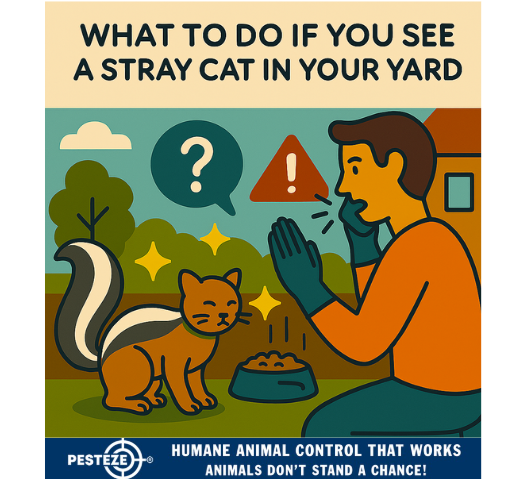WHAT TO DO IF YOU SEE A STRAY CAT IN YOUR YARD

WHAT TO DO IF YOU SEE A STRAY CAT IN YOUR YARD
SUMMARY
Spotting a stray cat in your yard can stir concern, curiosity, or compassion. While some cats are simply wandering, others may be lost, abandoned, or feral. Knowing how to respond safely and responsibly can help protect the cat, your pets, and your property. This guide outlines practical steps to assess the situation, offer help, and connect with local resources. With a calm and informed approach, you can make a meaningful difference in a stray cat’s life.
FEATURES
-
Observe from a Distance: Watch the cat’s behavior to determine if it’s feral, lost, or socialized.
-
Avoid Sudden Movements: Approach slowly and avoid chasing or cornering the cat.
-
Check for Identification: Look for a collar, tags, or signs of ownership if the cat allows close contact.
-
Offer Food and Water Safely: Provide nourishment in a quiet area to build trust without encouraging dependency.
-
Contact Local Shelters or Rescues: Report the sighting and ask for guidance on next steps.
-
Share on Community Networks: Post photos and details on social media and neighborhood apps to help locate an owner.
GUIDE DESCRIPTION
Seeing a stray cat in your yard can be a delicate situation. While some cats are outdoor pets with homes nearby, others may be lost or feral. The key is to respond with caution, compassion, and awareness of local resources.
Begin by observing the cat from a distance. Is it skittish, aggressive, or friendly? Feral cats tend to avoid humans, while lost or abandoned pets may appear confused or seek attention. Avoid approaching too quickly, as this can scare the cat and cause it to flee.
If the cat seems approachable, look for signs of identification. A collar or tag may provide contact information. If the cat allows handling, you can take it to a vet or shelter to scan for a microchip. However, never force interaction—safety comes first.
Offering food and water can help build trust, especially if the cat appears malnourished. Place bowls in a quiet, shaded area and observe from a distance. Avoid feeding indoors or in enclosed spaces, which may make the cat feel trapped.
Reach out to local animal shelters, rescue groups, or animal control. They can advise on whether the cat matches any lost pet reports and may offer assistance with trapping or fostering if needed.
Use community networks to spread the word. Post clear photos and details on social media, neighborhood platforms like Nextdoor, and lost pet websites. Include the location, time of sighting, and any distinguishing features.
By taking these steps, you’ll help ensure the stray cat receives the care it needs and has the best chance of reuniting with its owner—or finding a safe new home.
- Amy Chang


Comments 0